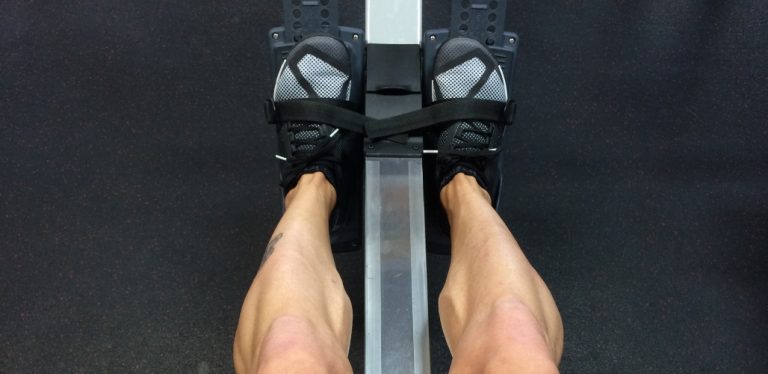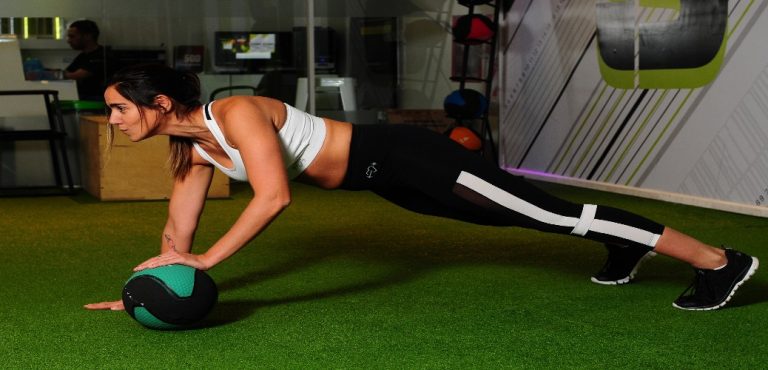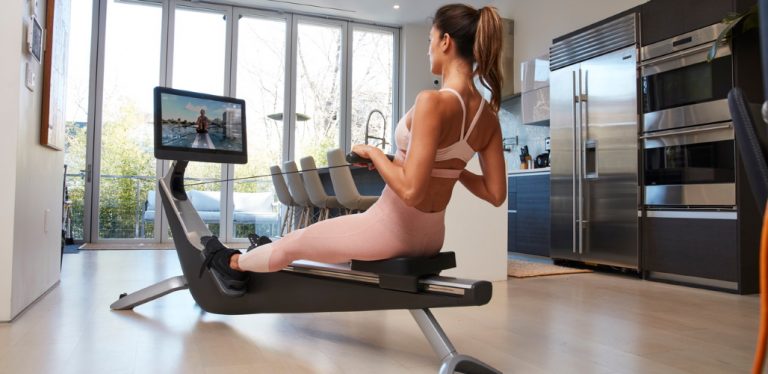What is HIT (High Intensity Training) and is it Right for You?
HIT (High Intensity Training) is an intense, no holds bare and low rest, workout methodology meant to push you to your limits… but is it right for you? This guide breaks down exactly what HIT is and what it isn’t. This includes differences between HIT and HIIT and how to start HIT training.
If you are looking for HIIT (HIT but with intervals of rest) check out the HIIT beginners guide or 22 great HIIT workouts. For those who want nonstop HIT action, keep reading!
What is HIT Training
HIT is a form of training that stands for high intensity training. It follows the ideology that one should work harder during a shorter interval period for the best results. Basically, in a nutshell — train harder, but quicker!
But how does this improve your fitness? When you push your body to its limit, you will also improve your stamina and muscular endurance over time. You may not be able to sustain this level of activity for long; however, this style trains you to adapt to this high intensity level. It will get easier over time, and you can reach your goals (strength and aesthetic) in even less time than you imagined.
High intensity training also improves your heart and lung function, as you’re mainly using your circulatory system when performing the workout so rapidly.
The key when doing this exercise is to keep your heart rate elevated and your muscles engaged. Use more weight and reduce your rest periods. Also, perform one set per exercise before moving onto the next.
–
Reasons to Do HIT Training
While individuals pursue HIT for several reasons, here are some of the core aspects:
This style can be adjusted to suit your level of fitness
You don’t have to be an all-star athlete to incorporate high effort style workouts into your routine. The HIT system can be adjusted to suit all levels of fitness. You can change the exercise time and intensity to suit your body type. The goal is to push yourself every time. While it may not be an easy form of exercise, it is certainly doable no matter your starting point.
It’s time efficient
Other workouts can be demanding of your time. No one wants to spend an hour working out when they have other things to tend to! If you have a lot on your plate (perhaps you work, go to school, or have a family), you can shorten your workouts by incorporating high intensity training workouts! They are relatively short and can last anywhere from 15 to 30 minutes, so you’ll get better results in less time.
It’s mentally challenging
Exercise offers more than simply physical activity. A true workout should also test your mental capabilities. Since this style of training can be so taxing, it’s also a great way to train your brain. When you convince your mind to do difficult things, you’ll find that you enjoy pushing your limits. You will be able to apply this mindset to other areas of your life, like school, work, or your relationships.
You can lose weight quickly
Since high-effort cardio burns hundreds of calories in a session, it will also serve as an excellent weight loss tool. This exercise can put you in a negative energy balance, which is the first step when trying to shed those extra pounds.
You can train less often
Since this training style is so demanding, ensure you’re resting properly in between workouts. The body repairs and builds upon itself OUT of the gym, not when you’re working out. Therefore, you will need to rest a few days in between workouts to ensure you’re fully recovered before your next challenging workout.
–
How to Implement HIT Training
Another great benefit of this style is that you can perform it in various ways, so it never feels stale. You can play around with various exercises, sets, rest periods, and weights.
The point is to get as close to muscular failure every time. You can also use the talk test to make sure you’re giving it your all. If you can have a casual conversation while exercising, you aren’t pushing yourself hard enough.
Increase the weight by 5% if you’re using free weights. Do this until you reach failure. However, ensure you’re keeping great form. When performing compound lifts, avoid fast and jerky motions as these can lead to injury. You can also throw in 3-10 different exercises after your main lifts to fill out the workout.
High effort full body circuits
Have you ever wondered how athletes get in great shape? They do a lot of high-effort workouts! However, their true secret is this — they perform this style by doing full body circuits. These workouts are designed to push every muscle in the body for optimum performance. Additionally, if you can’t make it to the gym every day throughout the week, high-effort circuits are the best way to ensure no muscle goes unworked!
The key is to exercise without taking any breaks. When you stop to take a breather, your heart rate goes back to normal. It will be tough, so ensure you have enough water nearby to not dehydrate the body while you’re working out. An example of a high-effort circuit looks like this.
- Start by stretching. You don’t want to pull a muscle! Focus on the muscles you will be targeting specifically. Calf raises can stretch out your hamstrings and calves. Try dynamic stretching instead of cold stretching
- Do a light warm-up on the treadmill. This should take around five minutes. Jog, but don’t run. You will need to preserve your energy
- Now it’s time to start the workout. Ensure you have adequate space around you Set a timer for 15 minutes. Then, start with 30 seconds of jumping jacks
- Move into 30 seconds of high knee kicks
- Perform 30 seconds of burpees
- Do 20 pushups
- Sprint for 30 seconds
- Repeat for ten rounds or until your timer rings
Sprints
Running and sprinting are other ways that you can target your high effort workout quota for the day. You don’t even need a gym to do this workout. Simply, find 20 free minutes in your day and find a track or run around your neighborhood. The trick is not to stop! This process may be easier on a treadmill since you won’t be tempted to take as many breaks.
Battle Ropes
Using battle ropes to perform this style of exercise is a fantastic idea. Battle ropes are thick and heavy ropes that you can move and manipulate with your arms. Squat down while moving the ropes in circles and spirals. You will also activate your glutes, quads, and core.
You will be surprised at how fast this workout will start to burn. Use the battle ropes for 20 minutes. Switch from circles and spirals or throw in some burpees to keep the exercise interesting.
Swimming
You don’t have to limit yourself to exercising on land. You can exercise in the water too! Try this style of training in the pool. There are several benefits to working out in the water. First, you won’t put strain and pressure on your joints. Running can tear away at the cartilage around your knees over time. For this workout, set a timer for 20 minutes and swim until you’ve reached 80% of your maximum effort. Stay here until your timer rings. You can switch between different strokes to keep things fun.
Weightlifting
Stick to performing compound lifts for optimum strength gains, then add accessory workout afterward. Compound movements include key exercises like bench press, squats, and deadlifts. Use heavier loads over time and reduce your resting periods to hit a certain heart rate level.
–
The Difference Between HIT and HIIT
Don’t confuse these two styles of training! They may sound similar, but they are actually quite different. HIIT cardio stands for high intensity interval training. With this particular style, one cycles between levels of high exertion and low exertion to burn fat and calories. HIIT cardio is one of the best tools you can use for burning fat while also building muscle. However, it will not help you build strength as well as high effort training can.
Misconceptions about this high intensity workout
There are several misconceptions about high effort exercise. For starters, many people believe that this form of exercise is only for fit individuals. However, as you know now, you can perform this type of workout in many different ways. In fact, switching up your routine is preferable when implementing this style.
Additionally, you shouldn’t try to work out this intensely every day. Doing so can cause you to overtrain and damage your body. Signs of overtraining can include fatigue, restlessness, irritability, and intense muscle aches.
–
Who Should Do HIT training?
Honestly — anyone should do this form of high-effort exercise! There are too many benefits to list, both mental and physical. Adjust the routine if you’re first starting out. Allow yourself a handful of breaks, but push through and workout until you hear your timer! This form of exercise may also be personalized to suit your specialties. If you have bad knee pain, do this form of exercise at the local pool. Alternatively, try an elliptical! This is another way you can train like a beast without placing too much strain on your body’s sensitive pressure points.
–
How Often You Should Do HIT Workouts?
You should be implementing this form of cardio three times a week, at least. If you’re also trying to build muscle mass, perhaps limit this to twice a week.
Adding a recovery day is important, as you run the risk of overtraining when overexerting your body to this degree.
On the other side of the spectrum, extremely fit individuals should also try this type of training! It’s an awesome way to enhance your level of fitness, whether you’re a newcomer or a seasoned pro! If you’re a more experienced weightlifter, take even more rest days in between. This allows your body to heal itself before taking on more weight in the gym.
–
Dieting While Doing High Effort Workouts
Ensure you’re also eating enough calories when implementing this form of training, even if you’re trying to lose weight. Your body will need fats, proteins, and carbohydrates for energy to sustain your energy levels throughout the workout.
–
Safety Precautions When Doing HIT Training
Ensure you have a source of liquid nearby. Additionally, you don’t want to perform this exercise method in a hot climate. These factors can lead to dehydration. If you’re feeling dizzy or nauseous at any point, stop and take a break.
If you wear a fitness watch, check it every few minutes to ensure your heart rate does not shoot up to a dangerous level. Finally, maintain good form when doing exercises like squats and deadlifts to prevent serious muscle injuries.
–
Should You Do HIT Workouts When Building Muscle?
High effort exercise is great for people with dramatic weight loss goals. If you wish to increase your muscle mass, implement high level training once a week, as it’s a great way to improve your stamina. You can use it in tandem with hypertrophy training for the best results.
–
Conclusion
Done properly, HIT provides several benefits and is most often associated with Cross-Fit. Others may find the more popular HIIT appropriate for their workout goals. In either case, carefully evaluate if you require training guidance and check with your doctor before beginning any exercise program.
[starbox]






